New Gods for a Lunar New Year: A Guide to China’s Light Chaser Fantasy Films
It's the beginning of the Lunar New Year of the Rabbit! So we're offering an intro to recent adaptations of Chinese mythology, including Light Chaser's New Gods Cinematic Universe.
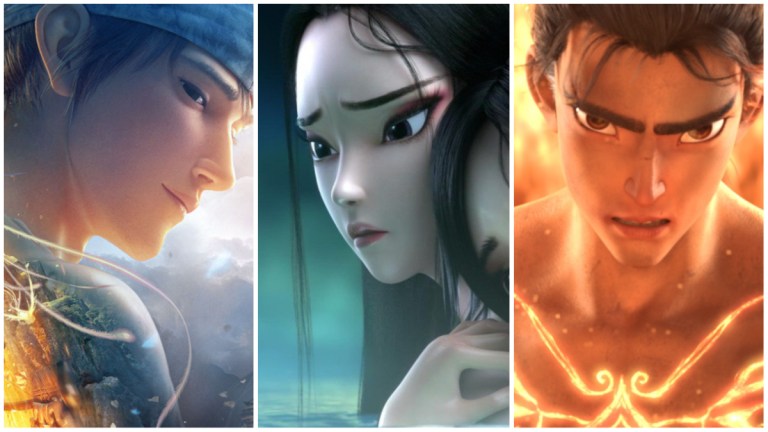
The Lunar New Year is a time of feasting and family gatherings. It’s also a time for new movies. China’s Lunar New Year film rush is on par with the holiday film rush in the West, with dozens of premieres jockeying to be the season’s number one blockbuster. In the Chinese queue for this year are films like Donnie Yen’s Kung Fu fantasy Sakra, The Wandering Earth II, the prequel to China’s visionary 2019 sci-fi, and the eagerly anticipated action comedy, Everything Under Control.
It often takes a few months for new Chinese films to cross the pond to the West, and they seldom get theatrical showings. However, Western theaters are becoming increasingly aware of the drawing power of the Lunar New Year and have begun to showcase some special releases in honor of the holiday. This year the U.S. market is treated to a limited theatrical release of New Gods: Yang Jian. It’s an animated epic based on an ancient tale that’s also part of a visionary new franchise known as the New Gods Universe. Based on the ancient myths of China, the New Gods Universe imagines beloved legendary heroes and villains in a steampunk world.
Yang Jian is a character extracted from two 16th century epic novels: The Investiture of the Gods, attributed to Xu Zhonglin, and Journey to the West, which is attributed to Wu Cheng’en. Like Homer’s Odyssey, deities meddle in human affairs in these tales, and the world is full of supernatural beings, demons, and magic. The Investiture of the Gods is set at the fall of the Shang Dynasty (1045 BCE) and the successive rise of the Zhou Dynasty. Some of the characters, like the King of Zhou, are based on historical figures. But in this telling, deities and demons play a hand in the transition, reminiscent of Arthurian legend. Journey to the West is about the Monkey King and his quest to protect his master, the monk Xuanzang, as they retrieve the Buddhist sutras from India (the west) to bring them to China. Xuanzang was also a real historical figure.
To welcome the release, we’ve unpacked New Gods: Yang Jian as well as some related Chinese fantasy films based on traditional legends.
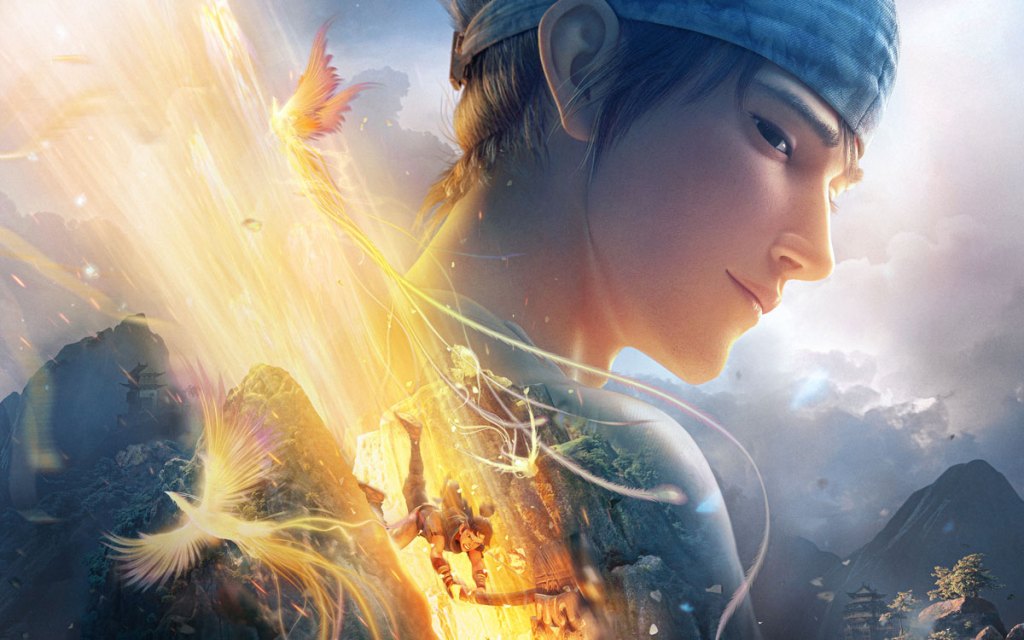
New Gods: Yang Jian (2022)
New Gods: Yang Jian premiered in China last August and has only just made its way to the West in time for Lunar New Year. It is the fourth installment of a burgeoning New Gods universe from Light Chaser Animation Studios. Yang Jian (also known as Erlang Shen) is the nephew of the Jade Emperor, who rules Heaven in Chinese mythology. And Yang Jian’s mother defied Heavenly Law by marrying a human. As punishment, she was imprisoned under a mountain, and it became Yang Jian’s mission to free her.
To understand the Light Chaser’s New Gods universe, and the parallel rival Fengshan universe, let’s go back to Light Chaser’s beginning.

Little Door Gods (2016)
Light Chaser Animation Studios launched with the film Little Door Gods. This was another animated myth-based story about the divine guardians used as folk talismans. From temples to private homes, Chinese buildings often have images of two guardian warriors flanking their front door. In Little Door Gods, the two guardians Yu Lei and Shen Tu are confronted with becoming obsolete because human technology has usurped their usefulness. It’s unrelated to what would become Light Chaser’s own New Gods Universe.
Little Door Gods was also the last film to be fully co-produced by the Weinstein Company before the scandalous downfall of Harvey Weinstein. The English dubbed version of Little Door Gods featured noted voice actors such as Meryl Streep, Nicole Kidman, Edward Norton, Bella Thorne, and Mel Brooks, but it never received much exposure. It wasn’t until Light Chaser’s fourth animated feature film when the New Gods cinematic universe truly began.
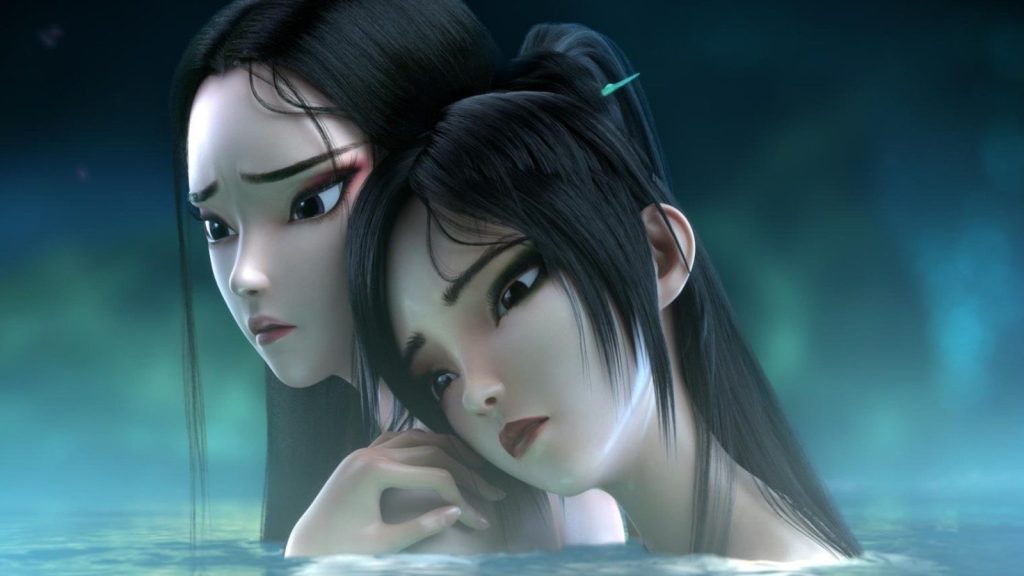
White Snake (2019)
Light Chaser’s fourth film, White Snake, is based on The Legend of White Snake, which is considered as one of the Four Great Folktales of China. It is the ultimate Romeo and Juliet tale, except in this case Juliet is a white snake demon. In White Snake, her name is translated to English as Blanca. Magical animal spirits proliferate Chinese mythology. They can take the form of humans and are somewhat like vampires, extracting the vital essences from humans to attain immortality. The Legend of White Snake is a cautionary tale of forbidden romance, and complicating the story is a monk exorcist named Fahui and White Snake’s sister, Green Snake. Green Snake is named Verta in this film.
No one knows when the original folktale originated, but it has been retold in countless forms ranging from classical Chinese operas, to over a dozen TV series, and more than a dozen films. The two most popular cinematic retellings were Green Snake (1993) and The Sorcerer and the White Snake (2011).
Green Snake of the ‘90s is a pre-CGI film from the master of the Fant-Asia genre, director Tsui Hark. Starring Joey Wang and Maggie Cheung as White Snake and Green Snake, both actresses embody their characters with serpentine sensuality. But beyond their slinky titillation, the film explores some big questions of good versus evil, delusion versus reality, emotion versus detachment, sibling rivalry, and what it means to be human.
The Sorcerer and the White Snake (2011) is the polar opposite to Green Snake when it comes to special effects. Where Green Snake used old school giant snake puppets and fog machines, The Sorcerer and the White Snake is a gratuitously 3D CGI spectacle, meant to be seen on the big silver screen. Some of the effects come off as cheesy, particularly the snake demons in their true form—they’re monster snakes with boobs—which brings into question whether they are reptiles or mammals. Jet Li stars as the Monk Fahui, and at the time Li claimed it was the most exhausting film he’d ever made due to all the fights he had to do. However, the fights are subpar for Li, mostly because none of his co-stars could actually fight, forcing him to slow down so as not to injure anyone as well as absorb wild hits from untrained actors.
Light Chaser’s adaptation is a relatively traditional interpretation set in a magical, ancient China. However, White Snake slithers into fresh territory when Blanca’s human lover seeks to become a demon too in order to be with her, and a battle rages at the snake catcher village where he is from. Where Light Chaser’s White Snake shines is its fresh animation style that vacillates between traditional Chinese painting influences and CGI video game art. White Snake was featured in several international animation and film festivals, which helped to establish the Light Chaser brand globally.
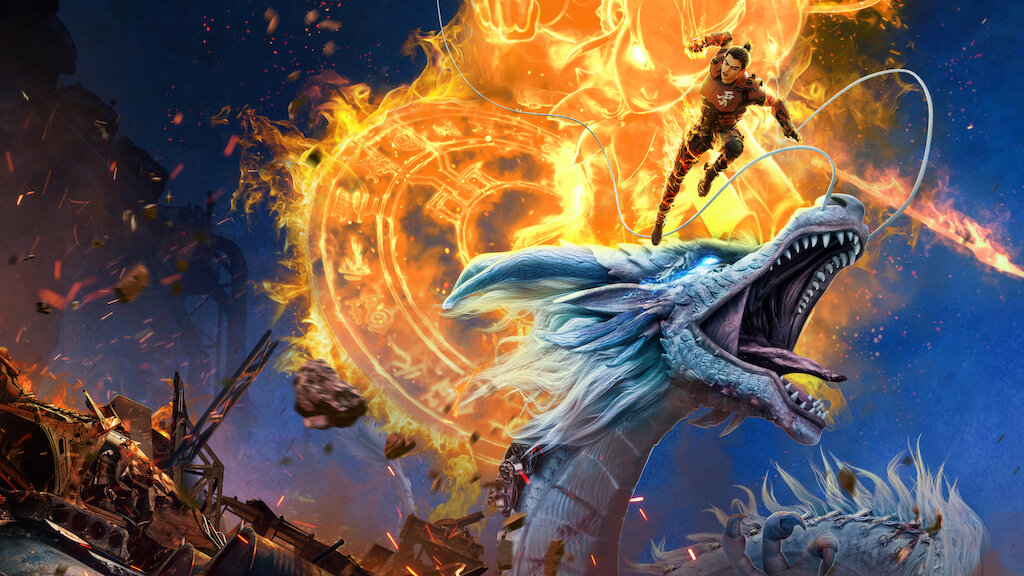
New Gods: Nezha Reborn (2021)
The second film in the New Gods Universe exploded the legend by setting the story in a post-apocalyptic cyberpunk/steampunk world. It revitalizes the nascent genre of Shanghai steampunk, which includes works like Tai Chi Zero (2012), the wonderful animated short The Bat Man of Shanghai (2012), The Legend of Korra (2012-2014), Into the Badlands (2015-2019), and The Village of No Return (2017). Nezha is another character from The Investiture of the Gods, who also makes a cameo in Journey to the West as a rival of the Monkey King. Nezha is often depicted as a baby, and a brat baby at that. He’s cocky, feisty, and rebellious.
In New Gods: Nezha Reborn, Nezha is reimagined as a young biker that is a reincarnation of the deity Nezha, living in the urban industrial sprawl of Donghai City. As he discovers his powers, he must face ancient rivals. Light Chaser leans more heavily on video game CGI animation here, with some visionary settings and characters. The connection to White Snake appears in a post-credits scene, bringing Verta into this world and establishing the New Gods Universe.
Any venerated legend is retold over and over, just like Batman and Spider-Man movies. This gets tricky here, however, because there’s another animated version of Nezha’s story that came out three years earlier and it is easy to confuse the two. Ne Zha is a 3D CGI animated feature film based upon the same character from The Investiture of the Gods and Journey to the West. It’s another huge, animated spectacle. Produced by Beijing Enlight Pictures, Ne Zha was exclusively released in IMAX and China Film Giant Screen theaters initially.
In comparison, Ne Zha is a more traditional telling of Nezha than New Gods: Nezha Reborn. It’s Nezha’s creation tale, depicting him as a child struggling to contain his destructive, magical powers. He ultimately becomes socially ostracized as a demon because of them. It’s a good introduction to the legend for anyone who doesn’t know it. Even though Ne Zha isn’t connected to New Gods: Nezha Reborn, if you don’t know the story, it might be a better place to start.
Admittedly, the animated backgrounds in Ne Zha feel derivative of Kung Fu Panda, but the eye-popping action scenes redeem this. The humor is puerile with pee and fart jokes (including a fart trap escape), as well as lots of cartoonish comic relief like dopey Monty Python-esque guards, a burly effeminate villager, a drunk fool, a flying pig that sneezes visions, a sea demon that blows petrifying bubbles, and antidote snot. But then it’s all about the fight scenes. There are sword fights, magic chi blasts, weird spiky weapons, Nezha’s signature magic spear, a magic fly whisk, a magic brush, and shuttlecock action.
It’s total superhero choreography, very satisfying and somewhat fresh in its vision. This launched yet another film franchise—Beijing Enlight’s Fengshen Cinematic Universe.
Jiang Ziya (2020) is another 3D CGI animated film based on a tale extracted from The Investiture of the Gods, and the second installment of the Fengshen Cinematic Universe (In Mandarin The Investiture of the Gods is “Fengshen Yanyi”—with the word “Fengshen” meaning “feudal supernatural beings”). Like the King of Zhou and Xuanzang, Jiang Ziya was a real historical figure.
Where Ne Zha lacked in animated backgrounds, Jiang Ziya excels. It’s a confusing story about the mortal Jiang Ziyi dealing with fox demons but the somewhat muddled retelling is completely overwhelmed by its otherworldly imagery. Best to let the visuals just wash over you. It builds a startling fresh world—visions of heaven and hell—and almost every scene is a feast for the eyes. It has one of the best depictions of a nine-tailed fox demon ever. Nezha appears in a post credit scene at a feast with Jiang Ziya where they wish the audience “Happy Lunar New Year.”
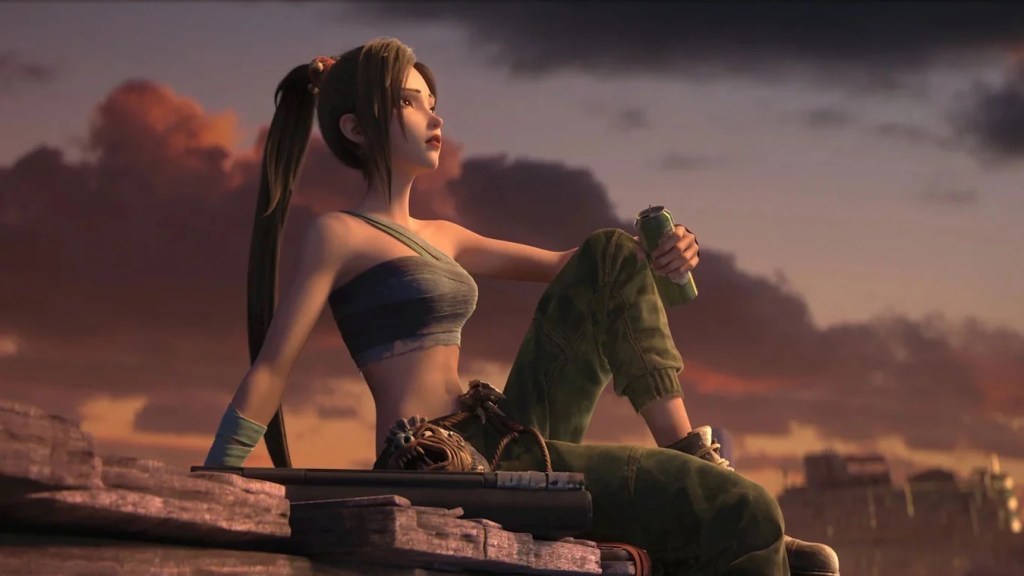
Green Snake (2021)
In the third installment in the Light Chaser Universe, Verta gets sucked into a dimensional portal and lands in Shura City. Although Nezha never appears, it’s clearly the same Shanghai steampunk world with parallel architecture and one of the same characters, a brilliantly actualized nine-tailed fox demoness. Perhaps Shura City borders Donghai City?
Verta and Blanca were separated at the end of White Snake, so in Green Snake (aka White Snake 2) Verta’s quest is to find her lost sister. The rub is that she has lost her magic powers. Verta finds herself caught between two feuding biker gangs, the Ox-heads and the Horse-faces. In Chinese mythology, Ox-head and Horse-face are the two guardians of the gate to the underworld. They have human bodies crowned with the heads of their namesake animals.
The post-credits scene teases the next project, which appears to focus on the nine-tailed fox girl that appears in both this film and New Gods: Nezha Reborn.
